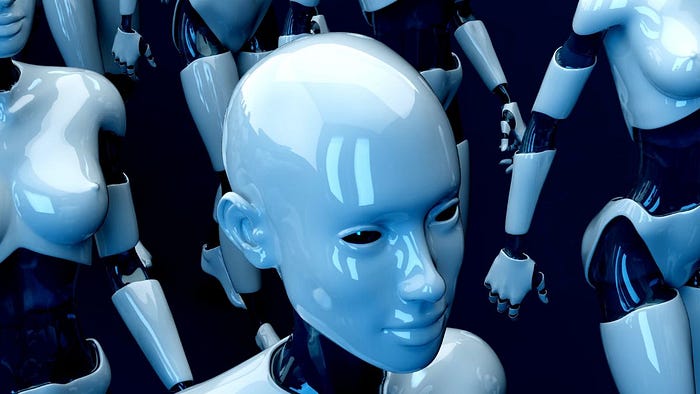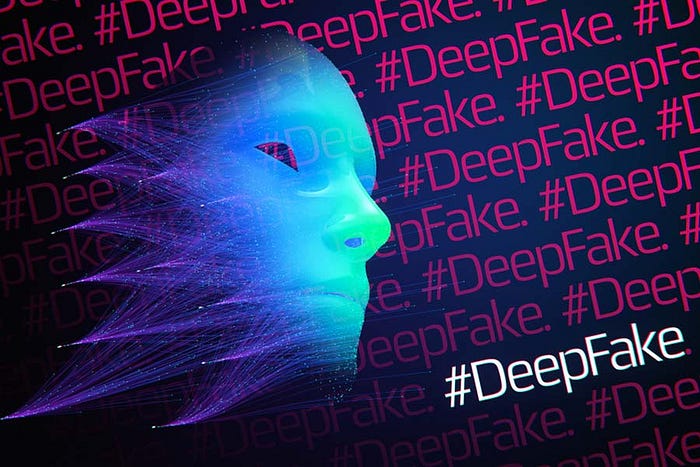
Deepfake Technology: Another Double-Edged Sword in The World of AI
Last Updated on June 4, 2024 by Editorial Team
Author(s): Jennifer Wales
Originally published on Towards AI.
Deepfake holds immense potential to revolutionize every sector. However, its misuse can lead to serious consequences. Learn more about this incredible tool here.

Deepfake refers to the type of fake media (pictures, videos, or audio) that closely resembles a real person’s face, voice, or even body which creates hyper-realistic videos or audio recordings.
Deepfakes have exploded lately and blurred the lines between reality and fiction. While the deepfake technology, sounds mostly negative, has several potential benefits as well. However, its misuse has already raised serious concerns because so far, we all have witnessed its negative impact mostly.
They are one of the most talked about AI technologies and therefore everyone needs to have a better understanding of what this technology is all about, its capabilities, and its impact on society. In this article, let us delve deeper into the theory of deepfakes and have a closer look at what the future holds in it.
The Power Behind Deep Fake Technology
Deepfakes are the product of artificial intelligence and machine learning algorithms. According to a study by Deeptrace, it was found that deepfake creation tools are readily available online with over 90% of deepfakes detected being celebrity-focused. These Generative AI tools use complex deep learning algorithms such as autoencoders and generative adversarial networks (GANs). Autoencoders learn, compress, and reconstruct data which allows the deep fake tools to isolate facial features. And then GANs pit two neural networks against each other — one that generates realistic video or audio, and another that tries to distinguish the fake from the real.
This competition between autoencoders and GANs the networks refine their skills and create increasingly realistic deepfakes.
The Positive uses of Deepfake technology
Well, unlike what it sounds like, deepfakes aren’t inherently bad. With proper control and responsible usage, they can bring about exciting possibilities in today’s world. Here are some positive applications of deepfake technology:
1. Entertainment: Deepfakes can revolutionize the filmmaking industry as they are capable of creating realistic special effects and may even bring deceased actors to life for cameos. Statista in its recent report mentioned that the global film industry is about to reach a revenue growth of around $221.3 billion by 2027. This indicates the use of deepfake is going to soar in the coming years.
2. Education: Deepfakes can be immensely beneficial in the education sector as well. It can create historical re-enactments and simulations for scientific training. Thus, it will lead to a more engaging learning experience and a better understanding of concepts and lessons.
3. Social Activism: It is also a great technology to raise awareness about social issues as it can create impactful public service announcements and highlight the plight of marginalized groups.
4. Art and creativity: It can create new forms of artistic expression and allow creators to experiment with storytelling and explore uncharted territories.
The negative impacts of Deepfake
Now, let us see the negative impacts of deepfake technology which it is famous for.
1. Propaganda and misinformation: recently deepfakes have been widely used to spread synthesized fake news stories and manipulate public opinion, particularly during elections as per a report by RAND Corporation, deepfakes can lead to an increase in distrust over democratic institutions.
2. Reputational damage: Cybercriminals and malicious users can use this technology to create deepfakes to damage someone’s reputation, create artificial compromising situations, and deepfake pornography.
3. Erosion of trust: if the use of deepfakes becomes more prevalent for negative use, it may lead to erosion of trust in media and public figures thus creating a society where distinguishing between what’s real and what’s fake will become extremely difficult.
4. Social unrest: this AI technology can also be used to provoke violence or create a rift between various communities of society by creating fake events or inciting hatred towards specific groups.
What is the future of Deepfakes?
The deepfake technology is constantly evolving. And with advancements in deep learning and machine learning algorithms, researchers will be able to develop increasingly advanced and sophisticated deepfake techniques to create more realistic and undetectable deepfakes.

However, proactive measures need to be taken to curb the misuse of this incredibly impactful technology. Technology companies might focus more on developing deepfake detection tools that will rely on analyzing facial movements, inconsistencies in lighting, or other factors to distinguish between fake and real.
For students and professionals looking to make a career in AI, the understanding of deepfake technology is crucial. They must leverage top artificial intelligence certification programs to learn in-depth about this newest AI technology and contribute towards its responsible development and use.

Addressing deep fake challenges
Here are some ways to address the challenges posed by deep fake technology:
– Creating strict ethical guidelines and regulations for deepfake creation and use.
– Educating the general public to identify deep fakes and developing a reporting mechanism
– Proper collaboration between media, tech companies, government, and the general public to develop detection tools, reporting mechanisms, identification of deepfakes, and other mitigating strategies to create a responsible deepfake ecosystem.
Conclusion
With both positive and negative impacts, deepfake is proving to be a double-edged sword in the field of artificial intelligence. It is a powerful tool having the potential to revolutionize different fields. However, the chances, as well as applications for misuse, are also infinite. Therefore, the need for responsible development and implementation is most important now. With proper media literacy, regulations, and guidelines, society as a whole can use deepfakes for good. Otherwise, it can lead to serious consequences.
Ultimately, the future of Deepfake depends on our collective responsibility to ensure they are used ethically and responsibly.
Join thousands of data leaders on the AI newsletter. Join over 80,000 subscribers and keep up to date with the latest developments in AI. From research to projects and ideas. If you are building an AI startup, an AI-related product, or a service, we invite you to consider becoming a sponsor.
Published via Towards AI
Take our 90+ lesson From Beginner to Advanced LLM Developer Certification: From choosing a project to deploying a working product this is the most comprehensive and practical LLM course out there!
Towards AI has published Building LLMs for Production—our 470+ page guide to mastering LLMs with practical projects and expert insights!

Discover Your Dream AI Career at Towards AI Jobs
Towards AI has built a jobs board tailored specifically to Machine Learning and Data Science Jobs and Skills. Our software searches for live AI jobs each hour, labels and categorises them and makes them easily searchable. Explore over 40,000 live jobs today with Towards AI Jobs!
Note: Content contains the views of the contributing authors and not Towards AI.














